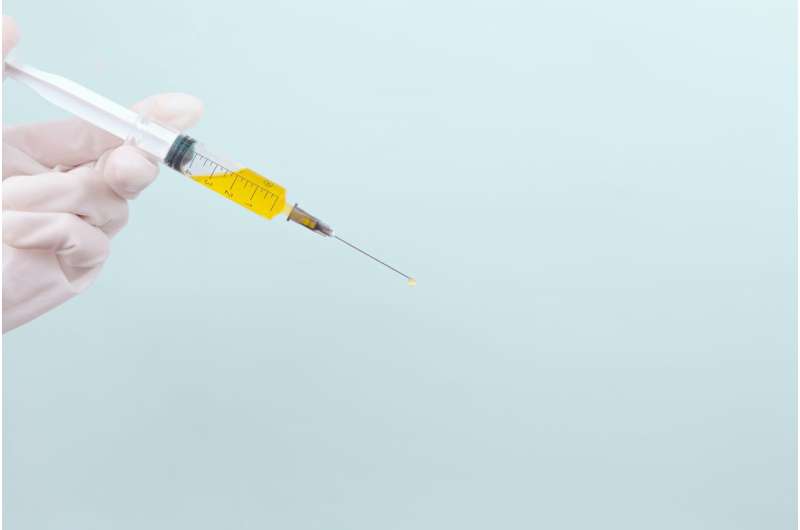This article has been reviewed according to Science X's editorial process and policies. Editors have highlighted the following attributes while ensuring the content's credibility:
fact-checked
peer-reviewed publication
trusted source
proofread
Botox found to improve chronic nausea and vomiting in children with disorder of gut-brain interaction

A study from Ann & Robert H. Lurie Children's Hospital of Chicago demonstrated that Botulinum toxin (Botox) injected in the pylorus (sphincter where the stomach exits into the small intestine) during endoscopy improves chronic nausea and vomiting in children who have a disorder of gut-brain interaction (DGBI). These debilitating symptoms not attributed to a defined illness have previously been called functional gastrointestinal disorders before the newer DGBI classification.
The study's findings point to a novel understanding of the condition's pathology—pylorus that is failing to relax and allow food to effectively pass into the small intestine resulting in symptoms of nausea, vomiting, stomach fullness (early satiety), and bloating. Results were published in the Journal of Pediatric Gastroenterology & Nutrition.
"Our results suggest that chronic nausea and vomiting might be caused by pyloric dysfunction, rather than abnormal peristalsis, which is the rhythmic contraction and relaxation of digestive tract muscles needed to move foods and liquids through the gastrointestinal system," said lead author Peter Osgood, MD, gastroenterologist at Lurie Children's and Assistant Professor of Pediatrics at Northwestern University Feinberg School of Medicine.
"This is a paradigm shift in our understanding of mechanistic pathology. Importantly, it opens the door to a more targeted use of Botox specifically in children who are found to have pyloric dysfunction during endoscopy, and for whom the current medications are not effective."
In the study that included 25 patients, Dr. Osgood and colleagues looked for evidence of abnormal peristalsis. They found that in the majority of patients, this process was normal. They also found that most patients responded favorably to pyloric Botox injection, even when they did not have delayed gastric emptying.
"Pyloric dysfunction has been underexplored in the context of chronic nausea and vomiting in children," said senior author John Fortunato, Jr, MD, Director of Neurointestinal and Motility Program at Lurie Children's and Professor of Pediatrics at Northwestern University Feinberg School of Medicine. "We are pursuing further research to better understand pyloric pathology and its response to Botox therapy. Our study is a promising first step toward offering much needed relief to children suffering from these challenging symptoms."
More information: Peter T. Osgood et al, Intrapyloric Botulinum Toxin Injection for Refractory Nausea and Vomiting in Pediatric Patients, Journal of Pediatric Gastroenterology & Nutrition (2023). DOI: 10.1097/MPG.0000000000003954



















